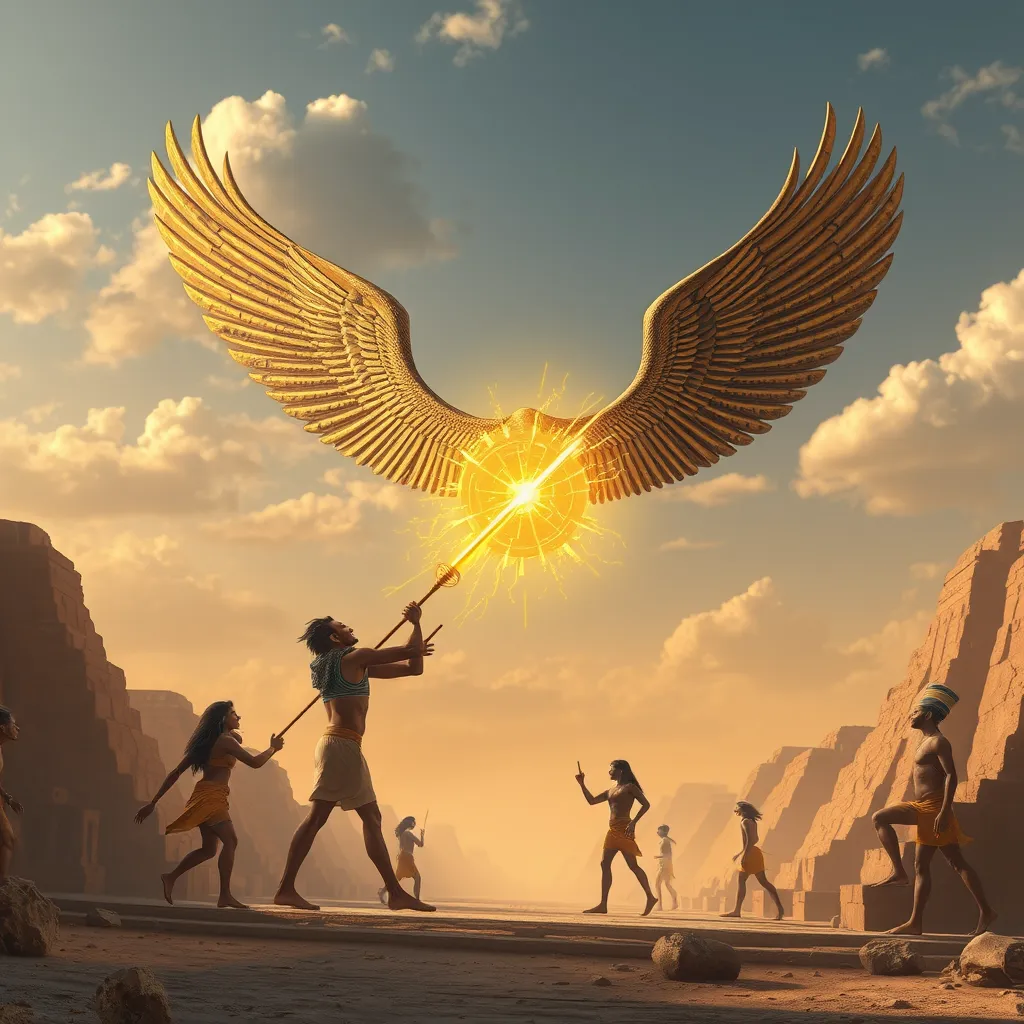The Battle for the Soul: The Ancient Egyptian Understanding of the Afterlife
I. Introduction
Ancient Egyptian beliefs about the afterlife were integral to their culture and religion. The Egyptians viewed death not as an end, but as a transition to another existence, full of challenges and opportunities for the soul. The afterlife was a central theme in their religion, significantly influencing their daily lives, art, and architecture. Understanding these beliefs offers insight into how the ancient Egyptians perceived life, morality, and the cosmos.
II. The Concept of Ma’at
Ma’at is a fundamental concept in Ancient Egyptian culture, embodying truth, balance, order, and justice. It was considered essential for maintaining harmony in the universe and in the lives of individuals. The Egyptians believed that adherence to Ma’at would ensure a favorable judgment in the afterlife. The significance of Ma’at can be summarized as follows:
- It represented the moral order of the universe.
- It was personified by the goddess Ma’at, depicted with an ostrich feather.
- It guided the pharaohs and individuals in their actions and decisions.
The role of Ma’at in the judgment of the soul was paramount, as it determined the fate of the deceased in the afterlife.
III. The Journey of the Soul
The journey of the soul after death was believed to be treacherous, taking it through the Duat, the Egyptian underworld. This journey involved navigating through various realms filled with obstacles and challenges, which tested the soul’s worthiness. Key aspects of this journey included:
- Crossing the waters of chaos, represented by the serpent Apep.
- Facing various monsters and spirits that sought to hinder the soul.
- Seeking guidance from deities and protective spirits along the way.
Success in this journey was crucial as it led to the soul’s ultimate judgment and potential entry into the Field of Reeds, a paradise where the deceased could live in peace and abundance.
IV. The Weighing of the Heart Ceremony
One of the most critical moments in the afterlife was the Weighing of the Heart ceremony. This ceremony was presided over by Osiris, the god of the afterlife, and Anubis, the god of mummification and the afterlife. The heart of the deceased was weighed against the feather of Ma’at, symbolizing truth and justice.
The process involved:
- The heart would be placed on one side of a scale.
- The feather of Ma’at would be placed on the other side.
- If the heart was lighter or equal in weight to the feather, the soul was deemed worthy.
- If the heart was heavier, it would be devoured by Ammit, the soul-eating monster.
This ceremony symbolized the ultimate judgment of the soul and was a pivotal moment determining its fate in the afterlife.
V. The Role of Deities in the Afterlife
Several deities played vital roles in the afterlife, each with specific functions and powers that influenced the journey of the soul. Major gods and goddesses included:
- Osiris: The god of the afterlife, resurrection, and agriculture.
- Anubis: The god who guided souls to the afterlife and oversaw the mummification process.
- Isis: The goddess of magic and motherhood, who protected the dead and helped in the resurrection of Osiris.
These deities were central figures in the narratives surrounding death and the afterlife, embodying the hopes and fears of the ancient Egyptians regarding what lay beyond this life.
VI. Funerary Practices and Beliefs
The beliefs surrounding the afterlife greatly influenced the funerary practices of the ancient Egyptians. These practices were designed to ensure the deceased had a successful journey into the afterlife. Key elements included:
- Burial Customs: Bodies were mummified to preserve them for the afterlife. Tombs were constructed with great care, often filled with items the deceased would need in the next life.
- Significance of Offerings: Food, drink, and goods were placed in tombs as offerings for the deceased. Rituals were performed to sustain the spirits of the departed.
- Tomb Construction: Tombs were elaborate structures, often adorned with inscriptions and paintings depicting the deceased’s life and the journey to the afterlife.
These practices reflected the deep-seated belief in the continuation of life after death, influencing both social structures and personal behavior in ancient Egyptian society.
VII. Texts and Artifacts Highlighting Afterlife Beliefs
The ancient Egyptians left behind a wealth of texts and artifacts that provide insight into their beliefs about the afterlife. The most notable among these is the Book of the Dead, a collection of spells and incantations aimed at guiding the deceased through the afterlife.
Other significant contributions include:
- Tomb Paintings: Vibrant images depicting scenes of daily life, divine protection, and rituals, intended to aid the deceased on their journey.
- Inscriptions: Hieroglyphs that conveyed prayers and spells to ensure the deceased’s safety and prosperity in the afterlife.
These texts and artifacts serve as historical records of the Egyptians’ complex beliefs and practices related to death and the afterlife.
VIII. Conclusion
The beliefs regarding the afterlife in Ancient Egypt reflect a profound understanding of life, death, and morality. The commitment to Ma’at, the challenges of the journey through the Duat, and the significance of deities all illustrate a rich tapestry of spiritual beliefs that shaped the lives of the ancient Egyptians.
Today, the impact of these beliefs can still be observed in contemporary spiritual concepts, emphasizing the universal human quest for understanding what lies beyond death. The Ancient Egyptian understanding of the afterlife continues to fascinate scholars, historians, and spiritual seekers alike, highlighting its lasting legacy in human culture.




